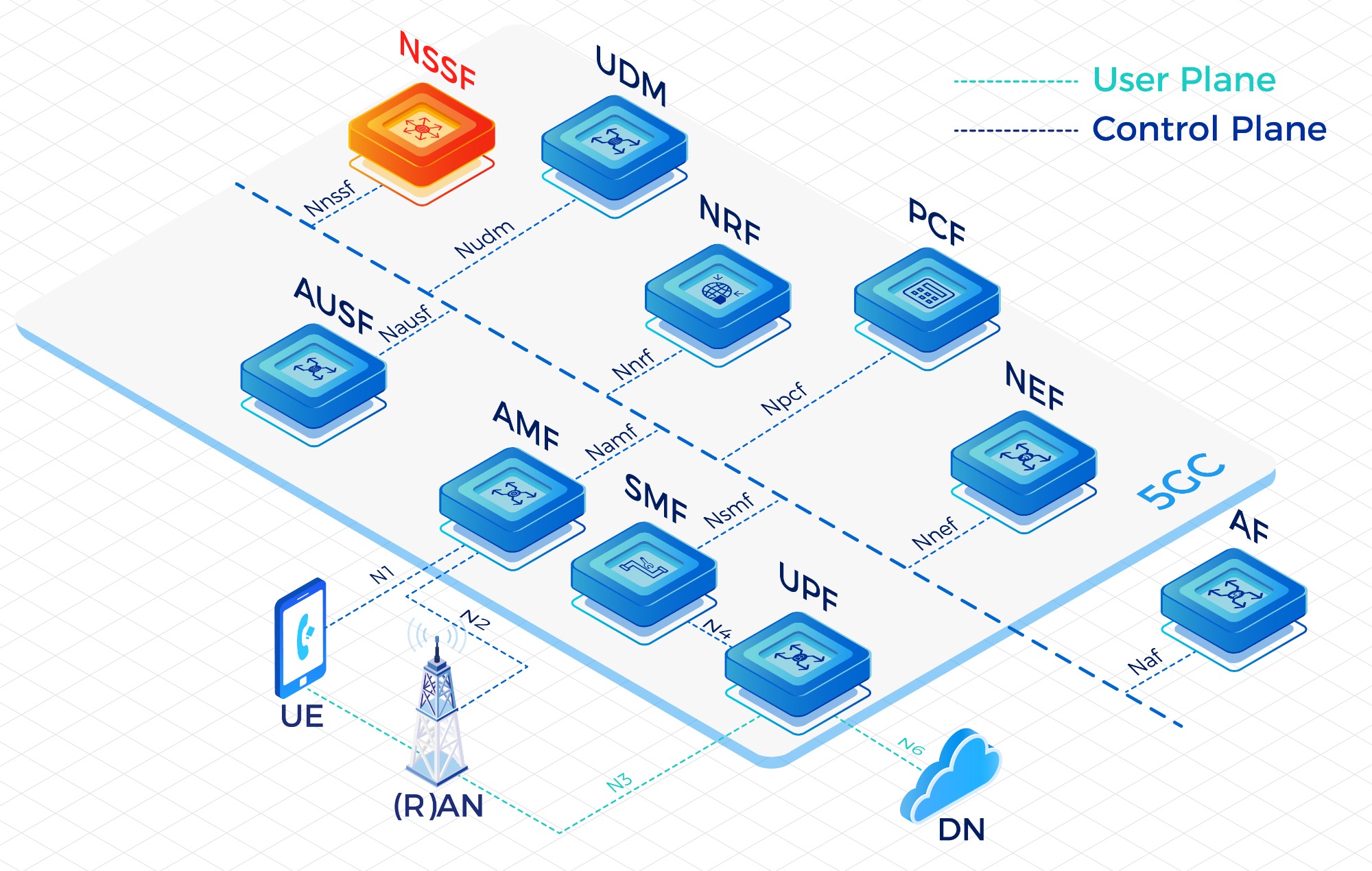
In the world of 5G, one of the most powerful innovations is network slicing — the ability to carve out multiple virtual networks, each tailored to specific needs. But when a user connects, how does the system know which slice to assign? This is the role of the Network Slice Selection Function (NSSF). Acting like a traffic controller, NSSF ensures that every device and service is matched to the right slice, delivering performance, reliability, and efficiency.
The Core Responsibilities of NSSF
NSSF plays a central role in enabling network slicing. It does not forward user traffic directly, but it makes the critical decisions that determine how traffic will flow. By analyzing user requests, subscription data, and slice availability, NSSF assigns each connection to the most suitable slice.
1. Slice Selection and Assignment
When a device connects to the network, NSSF evaluates its requirements — such as latency, throughput, or security — and selects the appropriate slice. For example, a video call may go to an enhanced mobile broadband slice, while a factory robot may be directed to an ultra-reliable low-latency slice.
2. Policy and Subscription Awareness
NSSF works closely with other functions like PCF and UDM, considering subscription information and operator policies. It ensures that devices only access slices they are authorized for, while aligning network use with business and operational priorities.
3. Supporting Dynamic Slicing
Slices are not static. Depending on location, load, or service type, the optimal slice may change. NSSF helps enable dynamic and flexible allocation, ensuring seamless service continuity even as network conditions evolve.
Inside the NSSF Workflow
When a user initiates a session, the AMF queries NSSF to determine the right slice. NSSF analyzes the request, applies subscription rules, and returns slice selection information. The AMF then establishes the connection on the chosen slice. If the user moves or network load shifts, NSSF may guide the system to adjust the slice, keeping performance consistent.
Why NSSF Is Essential for 5G
NSSF is what makes network slicing practical and efficient. It ensures that resources are used wisely, that mission-critical services get priority, and that users enjoy consistent performance. Without NSSF, slices would exist in idea but could not be managed dynamically at scale.
NSSF in Real-World Applications
Smart Manufacturing: Robots and sensors rely on ultra-reliable slices, while video monitoring runs on broadband slices, all assigned by NSSF.
Autonomous Vehicles: Cars connect to low-latency slices for real-time V2X communication, with NSSF ensuring the right match.
Enterprise Services: Businesses can operate dedicated slices for security or performance, with NSSF enforcing subscription and policy.
Public Networks: Consumers benefit from broadband slices optimized for streaming and gaming, while critical infrastructure operates separately.
NSSF: The Gatekeeper of Network Slicing
NSSF does not move data itself, but it decides the “lane” that traffic takes within the 5G highway. By intelligently selecting slices, it makes 5G adaptable to industries, enterprises, and individuals alike.
As 5G scales and slicing becomes more complex, NSSF will remain the gatekeeper of customized connectivity, ensuring that every service gets exactly the network it needs.

